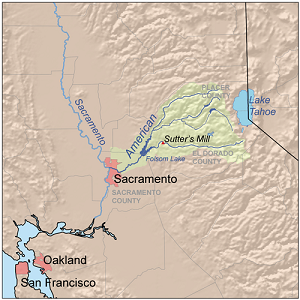Phoenix Palm Springs Los Angeles
San Mateo Sacramento Sonoma and Oregon
Phoenix Arizona and the American Southwest
Blue Skies Red
Rocks Mountain Trails Grand Canyons Desert Sunsets and City Culture
Phoenix
is the cosmopolitan heart of Arizona, the soul of the American
Southwest and where you
will find sports venues, live music, rooftop lounges, museums, theaters and art
galleries.
Downtown and its Cityscape two
block entertainment district is also home to the Phoenix Convention Center
and Arizona State University’s downtown campus; all served by one of the newest
light rail systems in the nation.
Arizona
Opera produces grand opera throughout the state of Arizona and is
one of only three companies in the US that performs in two cities. In Phoenix,
the company performs at Symphony Hall in Downtown.
Read More
Los Angeles Beverly Hills and Palm Springs California
Pacific Coast
Beaches Culture and Entertainment Shopping and an Endless Supply of Sunshine
Los Angeles
is
a metropolis with an extraordinary history and a rich cultural heritage. An entertainment
capital that is also home to renowned museums, a flourishing downtown, 75 miles
of sunny coastline
and internationally flavored neighborhoods.
Palm Springs
The nine cities that comprise Greater Palm Springs
offer an endless supply of sunshine and a local culture ranging from art and
air museums, tours of midcentury modern homes, a living desert - a unique zoo and botanical garden that
specializes in the deserts of the world - hiking, biking at the Indian Canyon, with
its numerous natural springs, Tahquitz Canyon, the Coachella Valley Preserve
and the Joshua Tree National Park, 794,000 acres with two diverse desert
ecosystems: the Colorado and Mojave Deserts. Read More
Logistics
Locations Costs Time and Personalization Solutions
Sacramento
California
Natural Beauty History
Cultural Attractions Cutting Edge Cuisine and Wineries
Sacramento sits at
the confluence of the Sacramento and American rivers, and is an ideal
destination for a Northern California itinerary and getaways to visit the Wine Country,
Gold Country, the Redwoods, San Francisco, Lake Tahoe, Reno, Yosemite, Lassen
Volcanic National Park and the Central Valley.
History Sacramento has a colorful history
filled with humor, steam trains, ghosts, heroes and villains, the California
Gold Rush and other tales of the Wild West. Read
More
Sonoma County California
Wineries Rugged
Coastlines and Redwood Forests
Sonoma is home to over 425 wineries, miles of rugged Pacific
coastline, towering redwood forests, and proximity to San Francisco. Also, more
than 50 nature parks that offer travelers miles of hiking and cycling trails
through towering redwoods or oak-studded hills, and rivers for kayaking and
canoeing.
Arts and Culture Sonoma County is home to sculpture
gardens tucked into hills, quaint small towns and high-end galleries as well as
performing arts centers like the Green Music Center, thousands of local artists
and 120 performing arts companies. Read More
Oregon Travel
Environment
Friendly Destinations and Vacations
Oregon
is an ideal winter destination where you can ski on volcanoes in the
Cascade Mountains; a nature lover’s paradise as you watch hundreds of gray
whales spout and storms over the Pacific; a connoisseur destination where you
can sip award-winning Oregon wines and micro beers; an environmentalist’s
delight with
Portland’s green lifestyle, free downtown
transport and local distinctive neighborhoods.
Video

The
Landscape
is diverse, with a windswept Pacific coastline, a volcano-studded Cascade
Range, abundant bodies of water in and west of the Cascades; dense evergreen, mixed,
and deciduous forests at lower elevations; and a high desert sprawling across
much of its east all the way to the Great Basin. The tall conifers, mainly Douglas
fir, along Oregon's rainy west coast contrast with the lighter-timbered and
fire-prone pine and juniper forests covering portions to the east. Abundant alders
in the west fix nitrogen for the conifers. Stretching east from central Oregon
are semi-arid shrub lands, prairies, deserts, steppes, and meadows. At 11,249
feet (3,429 m), Mount Hood is the state's highest point, and Crater Lake
National Park is Oregon's only national park.
Read More
Portland
Neighborhoods Planning & Development Sustainability and
Local Transport
Located between the Cascade Mountains and the
Pacific Ocean, Portland is at the northern end of the Willamette Valley and
river which flows through the city and links with the Columbia River. The
citizens and their local government are notable for: land-use planning, local
transport, environment conscious policies, high walkability, a large number
bicyclists and ten thousand acres of public parks.
Neighborhoods The Office of
Neighborhood Involvement serves as a conduit between city government and
Portland's 95 neighborhoods, each represented by a volunteer association
serving as liaison between residents and the city government. Portland and its
surrounding metropolitan area also have the only directly elected metro planning organization the United States with
responsibility for land use, transport planning and solid waste management. Read More












